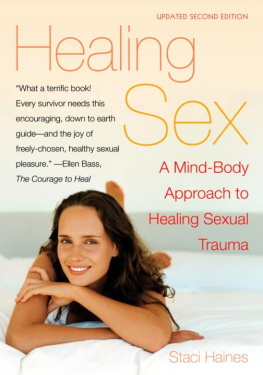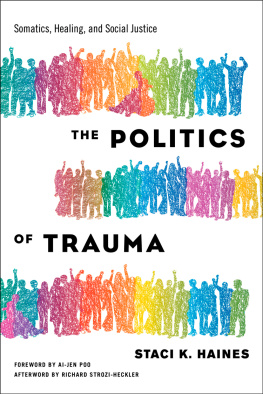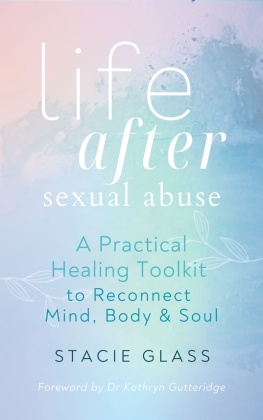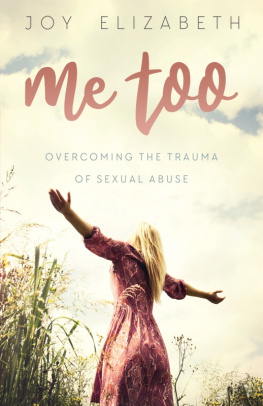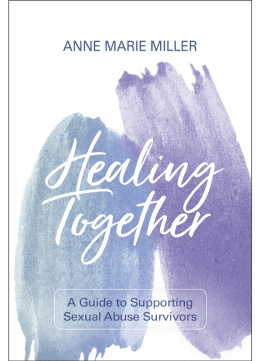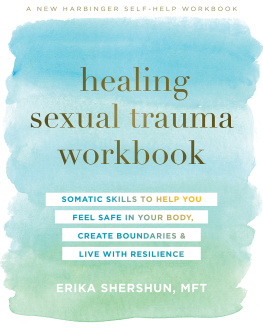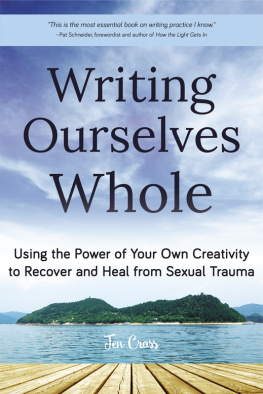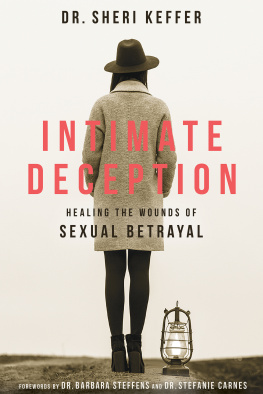




Acknowledgments
I wish to thank Denise Benson for her partnership and love, and for sharing her life, children, and family with me. To Richard Strozzi-Heckler, for the generosity with which he shares his mastery and innovation in somatics. I continue to learn from him how to listen deeply to what is greater and take life-affirming action in the world. To Akaya Windwood and Maria Gonzales Baron for walking the roads of liberation together, laughing. To Jackie Strano and Shar Rednour, whose tireless efforts made the DVD Healing Sex possible. I appreciate your ongoing commitment to sexpositive education, images, and possibilities for people. And, lastly, to my sister, Wendy, thank you for being my family, always.
My gratitude also goes to my editor, publisher, and friend Felice Newman, without whom none of this would have happened.
Dedication
This book is dedicated to the girls that we were. Welcome to the rest of your life, and the world you can create. May it be filled with pleasure and wisdom.
illustrations
contents
xiii
xxvii
The Choice to Heal
Safety and Sexual Healing
What's Down This Road, Anyway?
Somebody to Lean On: Self-Care and Support
Somatics: Including Your Body in Healing
Safer Sex
Getting Started
Sex Guide Exercises
chapter 2: 25
Discovering Your Pleasure and Desire
Desire Is in Your Body
Your Sexual Self-Education
The Complexity of Desire
Sex Guide Exercises
chapter 3: 37
Checking Out
Dissociation and You
The Road Back: Healing Dissociation
Sex Guide Exercises
chapter 51
Survival Is a Powerful Act
Sexual Aversion: Who Needs Sex, Anyway?
Sexual Compulsion: Sex as the Only Way
Healing Self-Denial
The End of Self-Denial
Sex Guide Exercises
Where Did You Learn That?
Sex Information and Sexual Abuse
So What Is That Thing? A Lesson in Sexual Anatomy
Sexual Response Cycle
Gynecological Issues
Your Body
Sex Guide Exercises
Self-Loving
A Bad Rap
Your Keystone to Healing
But I Don't Want to Masturbate
Five Steps to Great Masturbation
How to Touch Yourself
A Masturbation Date
Sex Toys, Fantasies, and Porn
Compulsive Masturbation
Mutual Masturbation
Sex Guide Exercises
What Is Consent?
Sexual Abuse and Unwanted Sex
Embodied Consent
Informed Consent
Knowing What You Want
Communicating Consent
"Yes," "No," and "Maybe" Vignettes
Negotiate Before You Play
Response from Others
Healthy Risks
Sex Guide Exercises
chapter 8: 117
The Good, the Bad, and...the Pleasurable?
Choosing Sexual Partners
Let's Talk About Sex
How to Meet Sexual Partners
Flirting and Kissing
Go Out There and Have Fun!
Sex Guide Exercises
Cunnilingus
The How-to's of Cunnilingus
Cunnilingus and Triggers
Fellatio
The How-to's of Fellatio
Fellatio and Triggers
Rimming
The How-to's of Rimming
Safer Oral Sex
Sex Guide Exercises
Vaginal Penetration
The How-to's of Vaginal Penetration
Anal Penetration
The How-to's of Anal Penetration
Safer Penetration
Penetration and Triggers
Sex Guide Exercises
chapter 151
What Is a Trigger?
Map to Recovery
Embracing Triggers: This Way Out
Trigger Plan and Tools
Tell It Like It Is: Communication and Triggers
Safewords
Troubling Desire
Healing Triggers Outside of Partner Sex
Taking a Break from Sex
Sex Guide Exercise
chapter 173
You Have to Feel It to Heal It
The Five Stages of Emotions
Emotional Centering
Emotional Sourcing
Emotional Healing
Being Witnessed in Your Emotions
Sex Guide Exercises
S/M 101: Consent, Power, and Sensation
Exploring the Edges
S/M and Survivors
S/M as "Acting Out" Abuse
Vanilla Role-Playing
Fantasy
Sex Guide Exercises
Vibrators
Dildos and Harnesses
Anal Toys
Lubricants
S/M and Bondage Toys
Toys, Safer Sex, and Cleaning
Erotic Books and DVDs
Phone Sex
Cyber Sex
Your Play Toys
Sex Guide Exercises
Tantra
Yoni Massage
Sacred Masturbation and Ceremony
Learning More
Sex Guide Exercises
chapter 10: 219
Combining Intimacy and Sex: Turning Up the Heat
Self-Forgiveness
Self-Trust and Compassion
Do I Deserve Pleasure?
Self-Permission
Sex Guide Exercises
It's Not Your Fault
No Saviors, No Patients
Take Care of Yourself
Expand Your Sexual Repertoire
You Get to Change, Too
Survivors as Partners
Sex Guide Exercises
Trauma
Somatic Healing
Sex-Positive Books and Resources
Introduction to the
Second Edition
In 1999, when this book was first published as The Survivor's Guide to Sex: How to Have an Empowered Sex Life After Child Sexual Abuse, I haggled over the title with the publisher. I wanted the word somatics in the title; the publisher understandably said no one would know what that meant. The next round continued over the term trauma and whether people would understand that word in the context of child sexual abuse. Now, here we are eight years later, and trauma is a more commonplace concept. Well beyond the boundaries of psychology, the general public uses the term to describe anything from the impact of war on soldiers and civilians to the intimate traumas of domestic violence and sexual abuse. And while somatics doesn't roll off of everyone's tongues, mind/body integration is recognized as something relevant to healing and learning.
There has been a profound growth in the field of trauma in the last fifteen years along with a near revolution in our understanding of the connection between psychobiology and trauma and healing. The central role of the mind/body in surviving and healing from traumatic experiences is now widely acknowledged. Somatics is the field leading these innovations, with top neurobiologists helping ground this work in studies of the brain and body chemistry before and after traumatic events.
As we head into this publication, I want to comment briefly on some of the recent research and innovations in both somatics and trauma. This new material is not included in the main body of Healing Sex. First, I'd like to offer a bit of science about just what is going on in our automatic survival reactions during and after traumatic experiences. Then I'll touch on the current integration of somatics into the field of psychology and what we need to be careful about as this is happening. Somatics is just now being institutionalized, and how this is done during these next years will set the course for its future. And last, I want to point to powerful innovations in looking at trauma as both an individual and a social phenomenon. This is not just the result of the obvious recent traumas of Hurricane Katrina, the tsunami in Indonesia and Asia, or the wars on Iraq and Afghanistan, but the more persistent and often unrecognized impacts of homophobia, sexism, racism, and other types of social oppression, often seen as the norm. These, too, impact us deeply.

